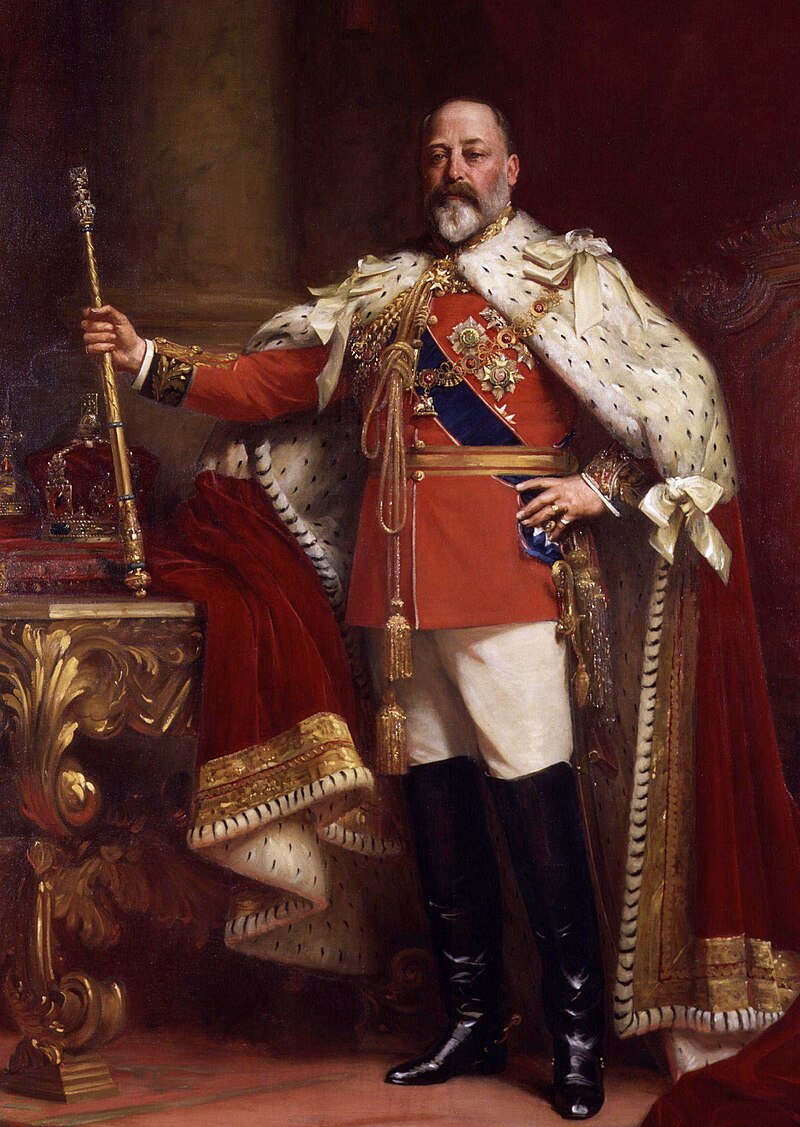by Scott Mehl © Unofficial Royalty 2020
Alice Keppel was the mistress of King Edward VII of the United Kingdom from 1898 until his death in 1910. Through her daughter Sonia, she is the great-grandmother of the wife of KIng Charles III of the United Kingdom, Queen Camilla.

Alice Keppel.source: Wikipedia
Alice Frederica “Freddie” Edmonstone was born in Woolwich, Kent on April 29, 1868, the youngest child of Sir William Edmonstone, 4th Baronet and Mary Elizabeth Parsons. She had 10 siblings:
- Mary Emma Edmonstone – died in childhood
- Archibald Edmonstone – died in infancy
- Jessie Edmonstone – married Major Edward Winnington-Ingram, no issue
- Louisa Ann Edmonstone – married Major General Henry Pipon, no issue
- Charlotte Henrietta Edmonstone – married Rev. John Kitson, had issue
- Frances Euphemia Edmonstone – married Alexander Duncan, no issue
- Sophia Edmonstone – married James Hope, had issue
- Susanna Emily Edmonstone – married Jonathan Bucknill, had issue
- Mary Clementina Edmonstone – married Andrew Murray, 1st Viscount Dunedin, had issue
- Sir Archibald Edmonstone, 5th Baronet – married Ida Forbes, had issue
On June 1, 1891, Alice married The Honorable George Keppel, a younger son of William Keppel, 7th Earl of Albemarle and Sophia Mary MacNab. The couple had two daughters:
- Violet Keppel (1894) – married Denys Trefusis, no issue
- Sonia Keppel (1900) – married Roland Calvert Cubitt, 3rd Baron Ashcombe, had issue
As a younger son and a serviceman, George Keppel did not have much in the way of financial resources. As a result, Alice had several affairs with rich men to help maintain their lifestyle and standing within London society. These lovers included Ernest Beckett, 2nd Baron Grimthorpe, and Humphrey Sturt, 2nd Baron Alington. As was often the case at the time, her husband took no issue with her affairs and discreetly took several lovers himself. Through her connections, Alice became one of the leading hostesses in London society. It was through her connections that she met The Prince of Wales and began a relationship that would last through his succession as King Edward VII and until he died in 1910.

King Edward VII. source: Wikipedia
The Prince of Wales, notorious for his womanizing, quickly set his sights on Alice after the two met in 1898, and the two soon began an affair. Despite a significant 26-year age difference, Alice quickly proved to be a calming and steadying force in the aging Prince’s life. Alice even gained the favor – albeit minimally – of The Princess of Wales who had long ago accepted her husband’s indiscretions, and appreciated Alice’s discretion.
Alice benefited greatly from her relationship with the Prince. Through his generosity, she gained a significant fortune with the help and advice of his bankers and financial advisors, including Sir Ernest Cassel whose granddaughter Edwina would later marry Edward VII’s great-nephew, The Earl Mountbatten of Burma. One gift alone from the Prince – some shares in a rubber company – would later provide her with £50,000 (around $ 8 million today).
Perhaps the greatest benefit was to Edward himself. Alice proved to be one of the few people in his circle who could calm his fiery temper and was often approached by his ministers to present things to the King, hoping to change his mind on issues or at least see them from a different perspective. Throughout the King’s reign, Alice remained one of his closest and most valued companions and advisors – and maintained the utmost level of discretion and privacy. Even when traveling together to Biarritz each year (while both of their spouses conveniently remained in England), Alice ensured that her presence went mostly unknown, insisting upon staying separately from the King and maintaining as much anonymity as possible. It was on one of these trips to Biarritz in 1910 that the King became ill. He returned to London in April, but his health continued to deteriorate. Alice – having a letter from the King which instructed that she should be permitted to his bedside – quickly rushed to Buckingham Palace to be with him in his final hours.

Villa dell’ Ombrellino. photo: Di Sailko – Opera propria, CC BY 3.0, https://commons.wikimedia.org/w/index.php?curid=41839507
King Edward VII died on May 6, 1910, and Alice’s position with the Royal court quickly ended. Alice and her family left the United Kingdom later that year, traveling throughout the Far East for two years before returning to London in 1912. Later, Alice and her husband moved to Italy in 1925, where they purchased the Villa dell’ Ombrellino in Bellosguardo, near Florence. There, they established their own social set, hosting events and gatherings, and hosting guests such as Prime Minister Winston Churchill. Returning to London in 1940 due to World War II, Alice and her husband finally returned to Bellosguardo in 1946 where they would remain until their deaths.

Graves of Alice Keppel and her husband. photo: By Elisa.rolle – Own work, CC BY-SA 4.0, https://commons.wikimedia.org/w/index.php?curid=57790238
Alice Keppel died at Villa dell’ Ombrellino on September 11, 1947, of cirrhosis of the liver. She and her husband – who died just 10 weeks later – are buried at the Cimitero Evangelico degli Allori in Florence.
This article is the intellectual property of Unofficial Royalty and is NOT TO BE COPIED, EDITED, OR POSTED IN ANY FORM ON ANOTHER WEBSITE under any circumstances. It is permissible to use a link that directs to Unofficial Royalty.
